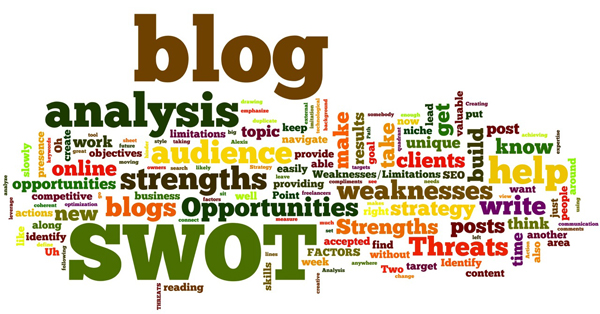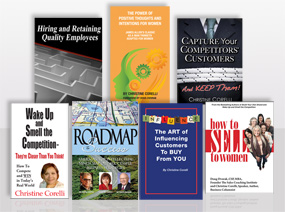
Considering today’s unprecedented stresses, volatile economic situation, more cost-conscious customers, and ferocious competition, you can’t help but wonder: “Who will be left standing three years from now?”
When the dust settles, there will be ten characteristics that identify companies that stood the test of time. These companies employed sound business practices and techniques that created and sustained success and ensured business development even in the most challenging business climate this generation has ever experienced. Three years from now, the following is what will be said of them:
1. They slowed down in order to speed up. They stopped what they were doing and conducted strategic planning sessions that included all the smartest people in their company, regardless of title or rank. This team was instructed to look at the business and industry as if they were unbiased outside consultants.
Together, the team had to acknowledge the harsh realities the organization was facing and made decisions on which business development techniques would ensure a more successful future. They did this fully realizing that they would likely have to shift gears along the way. They identified ways to cut costs, but not to the extent that cutting would lower the level of service they needed to provide. Instead, they retooled their business to meet and exceed customer expectations.
They addressed strengths and weaknesses, and established critical success factors for business development. They also identified key areas for improvement. Most important of all, they made a group commitment to meet their challenges head on and help all employees do the same. To ensure regular commitment to the mission at hand, they held informal quarterly retreats to evaluate progress and brainstorm new business development techniques.
2. Complacency was their enemy. They challenged the Status Quo, and took risks-not frivolously, but supported by rational decision-making and careful research. They adopted even bolder marketing and advertising strategies and competitively funded their business development and communications campaigns. They reinvented their organization to become more nimble, flexible, and more customer-focused. In addition, they recognized that the Green Movement was not about to subside. They created a green program, and did the right thing for their employees, community, and the planet.
3. They added value to their offerings. They consistently created and implemented new ways to package their products or services and add value to their offerings. They realized and exploited the fact that much of the value they provided to customers was the superior knowledge and expertise they had to offer. They established a VIP program for loyal customers that emphasized increased value and made these select customers feel special. They used the VMOP (Value Management Objective Process), in which performance criteria are set and evaluated by their customers themselves. They asked both existing and potential customers: “How can we provide more value?” What features would you like? Together, with customers, they reached agreement on priorities, actions, and outcomes.
4. They got serious about customer service. Every single aspect of the customer experience was analyzed. Service flaws were identified and eliminated. Systems and procedures were streamlined to make it easy for customers to do business with them. They consistently brainstormed and implemented ways to “up” the “Wow Factor, keeping in mind that no detail was too small. Teams were put into place to assist in these areas and in the establishment of a “Sales-Service Excellence Culture” (one in which every person is dedicated to helping sales through service excellence and giving their full support to the sales or business development team.) They even branded their service to demonstrate their commitment to service excellence.
(For free PDF: https://www.christinespeaks.com on how to create a Sales-Service Excellence culture.)
Together, the company and its people developed an obsession to deliver their best performance–with every customer, every day. They developed a reputation for exceptional customer service. Customer confidence was increased, as well as opportunities for business development.
5. State of the art technology was the driver and the tool to assist them in becoming faster than their competitors and closer to customers. They had to rethink their entire business strategy. They looked at the way they create products and services, their distribution channels, markets, customers, structure and knowledge base. Technology and the Internet was their tool.
In addition, social marketing was not taken as some passing fad. These companies were consistent with utilizing it for sales, marketing and advertising their business. Creativity was applied with each and every tweet, blog, Facebook post and You-Tube video. Their website was far superior to their competitors and optimized for search engine placement. No stone was left unturned.
6. They were learning organizations and learned faster than their competitors. They were constantly striving to improve and master their skills. Their sales team studied and mastered every single aspect of “Sales 101”– negotiation, sales communication, and presentation skills. Helping, and not selling was key to their success. They were masters at building relationships and trust with potential and existing customers. Training was provided for leaders and managers so that everyone would lead in the same way. They didn’t take it for granted that people knew how to serve customers; they trained them in all critical skills. Many conducted “Skill of the Month” learning sessions.
7. Every person in the company lived and breathed their core values.
All employees consistently demonstrated and operated from the core values of honesty, integrity, teamwork, respect, social and environmental consciousness, health, safety, family, and other values intrinsic to the company’s private mission. They knew that helping customers in tough times would build relationships, enhance customer loyalty for future business development.
8. Executives and managers treated their people the same way they treat their best customers. Setting a good example for the rest of the organization was a key to their success. They realized that businesses don’t do business. People do business. It’s the people in a company who will or will not carry an organization into a successful future and assist in bringing forth ideas for new business development techniques.
Dynamic leadership, teamwork, employee involvement and core values were demonstrated at all times. Reward and recognition (including unexpected small monetary rewards) were part of the culture. These companies had a “Zero Tolerance for Bad Bosses” policy. They knew that having great bosses and creating a great place to come to work each day was the best way to keep people motivated and performing at their best.
To make sure their people were happy, they conducted simple, yet effective employee satisfaction surveys annually. After analyzing them, they identified three areas for improvement and made a commitment to their workforce to improve in each area. Lip service was never allowed.
9. Execution was a strong part of their competitive strategy.
They recognized that knowing what they should do–and actually doing it-were two very different things. They mastered the art of getting things done and established specific criteria for excellence and accountability that the staff could use in every aspect of their job role. Leaders were judged on their ability to execute.
10. They kept their eye on the prize. “When the economy is down, you need to be UP” was their attitude. They realized that they had only one goal–to still be standing, business intact, growing, prospering, and with solid business development in the years to come.
Of course, the success of these companies in business development involved a great deal more. How are you doing in these areas? For now, the question you should ask is, “in three years, will we still be standing?” Set your goal even higher. “Will we be growing and prospering?” “Will your business development be strong? If the answer is that you are not sure, get moving on these ten irrefutable business development techniques that will ensure your success for the long run. Business development doesn’t just happen by itself. It takes the will power of an entire organization to succeed and that starts at the top.
Take action to ensure that you are one of the businesses still standing.
If you need assistance in business development techniques or wish to publish, no obligation, call (847) 477-7376 or e-mail BusinessDevelopment@christinespeaks.com
Need a great speaker on this topic? Click Here!


